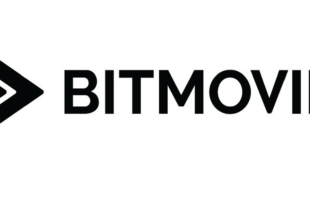World advertising spending is expected to reach US$490.5 billion dollars in 2009, according to Zenith Optimedia, slightly down from $491.6 billion in 2008. Whatever the final numbers there is no hiding from the fact that the global ad market is in the middle of a downturn that began in the third quarter of 2008 and has continued to worsen into early 2009. TV however, tends to perform relatively well in a shrinking ad market. Zenith points out that in the previous two downturns (in 1991-1992 and 2001-2002) advertisers shifted their expenditure from secondary media to TV due to its undeniable power to build brands. The report also pointed out that TV viewing tends to rise in recessions because it offers escapism, and at a much lower price per hour to the consumer. In mature markets, its effectiveness as a medium shelters it from cutbacks. Looking beyond 2009 the ZenithOptimedia report remained upbeat, predicting a rebound to 5.5 percent year-on-year growth already by 2010, and 5.8 percent in 2011. At time of writing, the outlook across Asia varies dramatically by market, Hong Kong managed to exceed 2007 figures by 12.09 percent with total adspend at US$3.2billion, yet Korean advertising spend is likely to reach its lowest ever point over the coming year, according to a recent survey by the Korean Advertisers Association (KAA). Against this backdrop, the release of the sixth annual Pitch- Madison Media Advertising Outlook for 2009 is both timely and a fascinating insight to the Indian marketplace set against five years of continuous growth. The TV industry grew between 15 and 20 percent every year from 2005 to 2008 and emerged as one of the best performing media. The outlook for 2009 is less rosy. According to Madison, the forecast growth for TV in 2009 is around 7 percent. However, the revenues from drivers such as FMCG which accounts for 48 percent of all television spend will remain at a steady growth rate closer to 17 percent whilst spends from banks, finance, durables and autos will take the biggest hit. We have yet to see the full effect on the telecom sector although the mobile handset market has stagnated. Advertisers seem divided on how they will utilize the media mix in the coming 12 months, although the emphasis seems to be on both digital and TV with more focused targeting and brand building. Overall TV managed to sustain a 40 percent share of advertising spend in 2008 and is expected to maintain that level moving forward buoyed up by the continuing strength of the consumer goods market in India. Outdoor and cinema will see revenue declines and print will remain flat as TV, FM radio and the internet further erode print’s position as number one medium. On TV, fragmentation has reached an all time high and ratings of the top peaktime shows have fallen noticeably, making the job of the media planner even more complicated. Audience growth in 2008 was driven by Hindi Movies and Entertainment genres growing share from 26.3 to 29.8 percent in 2008 with a good showing for the kids, sports and infotainment sectors. The Southern Indian Channels and National Broadcaster Doordashan both saw falls. Individual channel performance was also up and down – most noticeably for STAR PLUS, which for years led leading the pack in the Hindi Entertainment space. Share fell from 7.1 percent to 3.6 percent in December and may fall even further as the market fragments even further and new players with fresh ideas continue to flood the market. Atul Phadnis, head of ‘What’s on India’, India’s largest TV guidance and EPG company is closer to what is really happening in the market. In a recent report compiled exclusively for the Cable and Satellite Broadcasting association of Asia (CASBAA), he examines the effects of the current slowdown on advertising and the media mix. “Any downturn means that a planner will need to reexamine the benefits of traditional media such as TV and print against newer platforms such as the internet and FM radio. In this case, the reliability of audience measurement will have an important effect. As deals are being renegotiated, campaigns are being deferred and added value demanded, the ability to quantify the results are crucial. “News channels and business dailies are reeling from the disappearing ad revenues from auto, consumer electronics, finance, banking, real estate and mobile handsets.” In this climate, it is hard to see how the 28 News channels now on air can survive too long without ad dollars. He also sees a serious effect on the newer channels in the market. Historically media plans tend to favour the top two or three ranked channels. In both TV and print, market leaders are lowering prices in an attempt to derive growth via market share at the detriment of newer players who have yet to make their mark. Phadnis also points out that every time the Indian market has gone into a slowdown, brands tend to shorten the message, using smaller, cheaper ads. The same is expected in 2009. Finally, he draws attention to the fact that the way airtime in India is traded also needs a serious overhaul. He believes that India uses a flawed measure that is calculated on the cost paid, as a percentage of the total universe (CPRP). In all other mature TV markets the cost is measured on reaching a thousand viewers (CPM). This lack of fair evaluation will hurt more in a slower economy. It needs to be corrected at an industry level in order to grow the market. No doubt, the current economic turbulence will have even more, perhaps unforeseen effects during 2009. The Indian TV industry has seen massive salary increases and job hopping and must surely slow down as job security becomes more important. Channel carriage fees will have to come down and marketing spends such as those seen prior to the launch of INX, NTDV Imagine and Colors are unsustainable. On a positive note, some aspects of the Indian TV industry in 2009 have an outlook at which the rest of the region can only marvel. The set top box universe in India is rising steeply, kick-started by the recent entry of Airtel DTH and BIG TV DTH. Latest industry estimates suggest that over 2.5 million subscribers are being added every quarter. Perhaps this slowdown is a timely reminder for the ad industry to re-aim its collective thinking away from big numbers and to the powerful benefits of more cost effective target marketing. TVAplus
Ad – Before Content
Related Articles
Paramount+ and MTV announce Dating Naked UK has been renewed for a second series
Gyeongnam Culture and Arts Foundation Invests in Ikegami UHK-X700 4K-UHD HDR Cameras
LFP Media Transforms Video Experience and Maximizes Revenues with the Bitmovin Player
Iceland’s Glassriver options Reykjavik Noir trilogy from Lilja Sigurdardottir for series adaptation, picked up by broadcaster Síminn
OOONA Partners with Audio Description Associates, LLC
Fremantle has acquired the global distribution rights for Atlantic Productions’ Earth: A Year In Orbit









